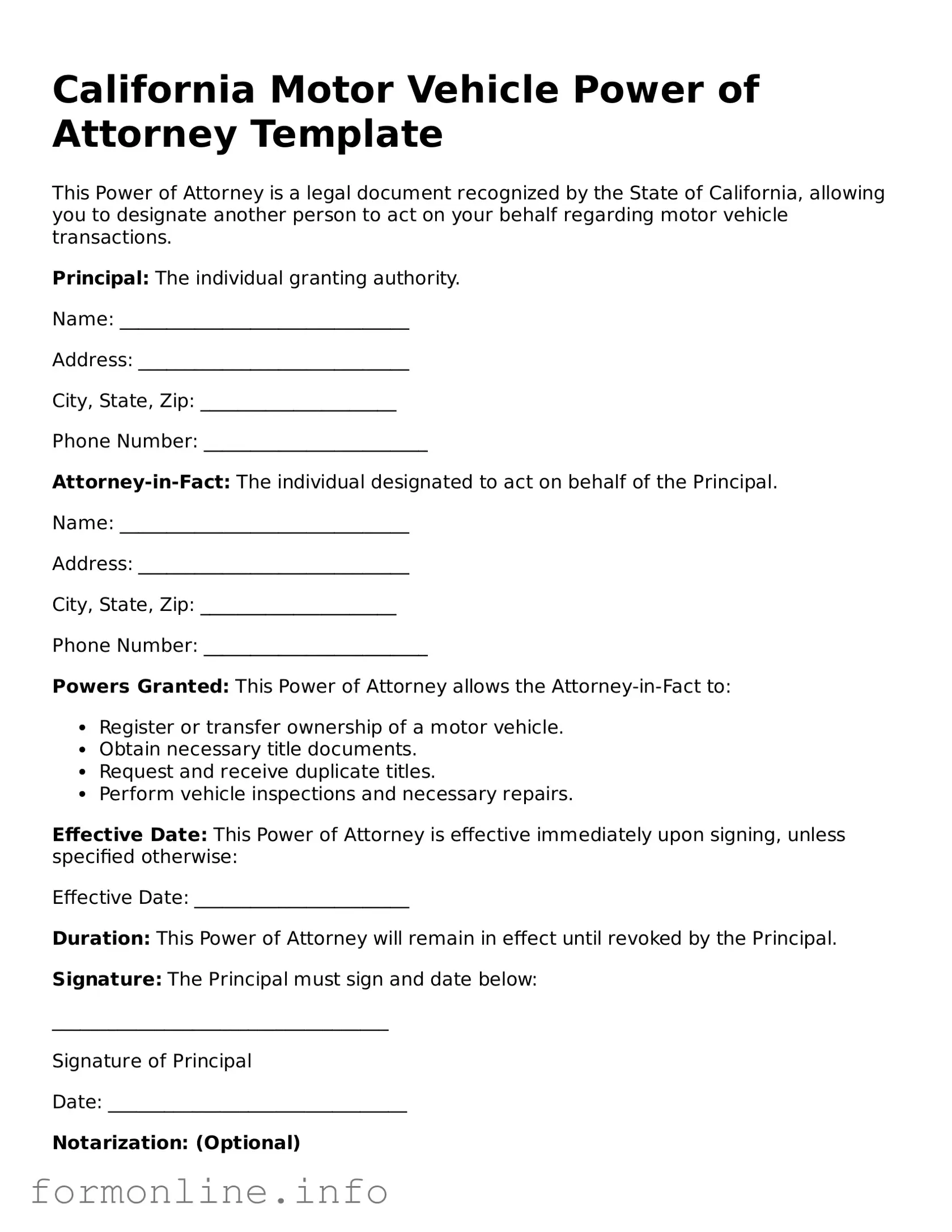California Motor Vehicle Power of Attorney Template
This Power of Attorney is a legal document recognized by the State of California, allowing you to designate another person to act on your behalf regarding motor vehicle transactions.
Principal: The individual granting authority.
Name: _______________________________
Address: _____________________________
City, State, Zip: _____________________
Phone Number: ________________________
Attorney-in-Fact: The individual designated to act on behalf of the Principal.
Name: _______________________________
Address: _____________________________
City, State, Zip: _____________________
Phone Number: ________________________
Powers Granted: This Power of Attorney allows the Attorney-in-Fact to:
- Register or transfer ownership of a motor vehicle.
- Obtain necessary title documents.
- Request and receive duplicate titles.
- Perform vehicle inspections and necessary repairs.
Effective Date: This Power of Attorney is effective immediately upon signing, unless specified otherwise:
Effective Date: _______________________
Duration: This Power of Attorney will remain in effect until revoked by the Principal.
Signature: The Principal must sign and date below:
____________________________________
Signature of Principal
Date: ________________________________
Notarization: (Optional)
State of California
County of ____________________________
On this __________ day of ____________, 20____, before me, a Notary Public, personally appeared _______________________________, known to me (or proved to me on the basis of satisfactory evidence) to be the person whose name is subscribed to this instrument, and acknowledged that he/she executed it.
_______________________________
Notary Public Signature
My commission expires: ________________
Please take a moment to review this document thoroughly. Ensure all information is accurate and complete before signing.
